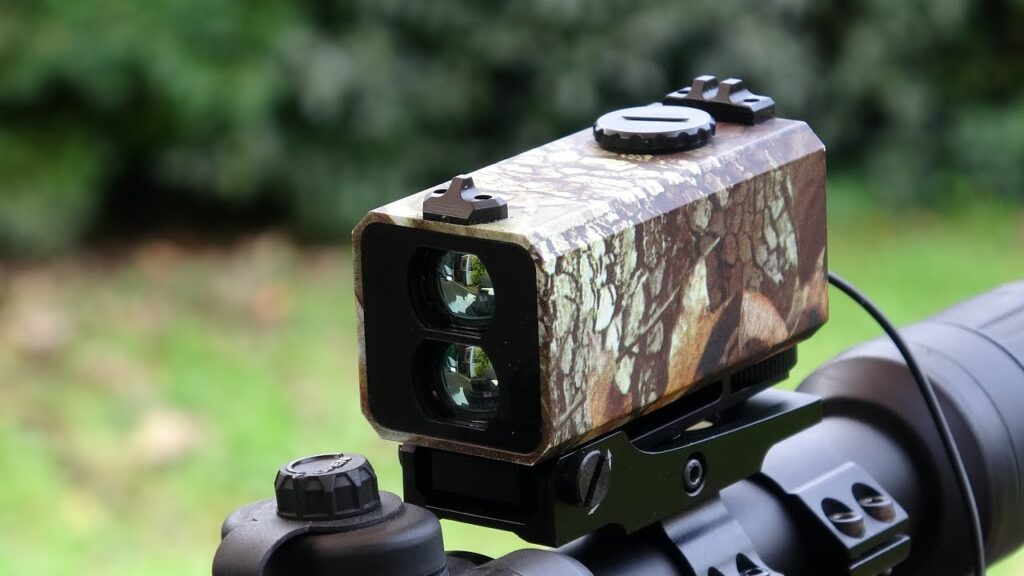How Does a Rangefinder Work?

A rangefinder is an instrument used for identifying objects. It can be a laser, sonar, or GPS rangefinder. Some of the more common types of rangefinders are those that use a laser to locate objects. Others are more sophisticated and include an array of sensors to identify targets.
Laser rangefinders
Laser rangefinders are an essential tool for anyone who wants to make accurate measurements of a distance. These devices are useful for many purposes, including hunting, modeling trees, and even managing ecosystems. However, it’s important to remember that they have limitations. Some rangefinders are too expensive and some may not perform to their fullest. While lasers are good for detecting objects in the near distance, they are less reliable for longer-distance measurements.
Rangefinders are similar to scopes in that they measure distance using a laser beam. The beam is narrow and diverges, and it is reflected off of the object being measured. Typically, the beam is visible to the human eye. For more powerful lasers, it can extend over greater distances. A narrow band filter allows the rangefinder to operate in bright daylight.
One of the more interesting features of a laser rangefinder is its ability to give a precise reading in seconds. Laser rangefinders have a high-speed clock that records the time it takes for the laser beam to bounce back. This data is interpreted by the software and a measurement is calculated. It’s a lot of information to process, but it’s a good way to get a precise reading.
Some rangefinders use a complex system of optics and electronics to send out a pulse of laser light and then reflect it back to the device. Other rangefinders use timing circuitry to determine how long it takes for the laser to return. As a result, the laser range finder is one of the most accurate distance measuring tools on the market.
Another important feature is the beam’s ability to detect smaller objects. Unlike radar, the laser rangefinder can spot objects that are only a few feet away. That’s because the beam’s divergence is relatively low. Compared to the radar, it’s also possible to see the object you’re targeting in three dimensions. Combined with the range finder’s high-speed clock, this makes it a powerful tool for distance measuring.
Another feature is the ability to take in many measurements at once. Many models of rangefinders have multiple beams, each with a different wavelength. In addition, these devices can filter out ambient light to make sure that you receive only your own light.
If you’re thinking of buying a rangefinder, you might be wondering how it works. You’ll want to read up on the different technologies and capabilities. Make sure you’re getting the best model for your application. By reading up on the features of your chosen rangefinder, you’ll have a better understanding of how to use it properly. Having a solid knowledge base and a good rangefinder will ensure you get the most out of your investment.
Using a rangefinder correctly is not difficult if you do your research and follow the manufacturer’s instructions. If you don’t know where to begin, there are some excellent videos on YouTube that can provide you with the basic guidelines for using your new rangefinder.
SONAR rangefinders
When it comes to measuring distance, there are many different kinds of rangefinders that you can use. These devices can be digital or analog. Each type is used for a different purpose. They can be used for object avoidance, mapping the earth, determining the density of trees, and more.
Sonar Rangefinders work by using a sound pulse, which is created in an auditory sensor. The speed of the sound pulse can be measured to determine the distance to the target. This device is also used underwater and on mobile robots. In addition to detecting and locating objects, these sensors can also be used for collision avoidance.
Another popular variety of rangefinder is laser rangefinders. These devices are also known as light detection and ranging (LIDAR). Like sonar, these sensors use an auditory pulse to measure the distance. However, these devices can detect objects farther than a sonar rangefinder. Lasers can have a higher power output than other types of rangefinders. Some laser rangefinders can provide 3D images of the environment.
Ultrasonic Range Finder sensors use the same principle as echo-locating bats. These sensors bounce off objects and listen for the echoes to return. This can then be converted to distance. This is especially useful for robots and drones that have to follow a path.
Maxbotix LV-EZ1 Ultrasonic Rangefinders have a resolution of one inch and a pulse width output. These sensors have an easy-to-use interface and provide accurate information about distance. They can be used for short-range detection and long-range detection. These range finders are compatible with both the PWM and RS232 serial ports.
Other range finders include Lidar-Lite, which has a 5 cm to 40 m range. It is a compact and lightweight device. This range finder is suited for a variety of applications including a Gazebo Simulator. You can also connect it to an I2C port. Alternatively, you can use the DroneCAN. Avionics Anonymous offers this interface.
If you are looking for a less expensive range finder, you may want to consider an optical range finder. These range finders are inexpensive, but they require careful handling. An optical rangefinder uses a focusing knob and must be pointed properly. Also, they are affected by weather. While the technology is not as advanced as the other types, these sensors are still effective and portable.
Ultrasonic range finding principles are safe for humans and are effective for short range measurements. They are also a good choice for parking sensors. The Ultrasonic Range Finder uses the same basic principle as the echo-locating bats and dolphins. As a result, they can also detect vehicles at drive-thrus.
For a simple way to test out a range finder, try placing a small, foam ball at a specific distance. After a few seconds, the sound beam will bounce back and forth. At this point, the time between the emission and the reception of the beam can be calculated to determine the distance.
GPS rangefinders
If you are considering buying a golf rangefinder for use on your next round of golf, you might be wondering how these devices work. Basically, these gadgets have two main functions: to provide you with a distance reading to your next ball, and to offer you some information about the course you are playing. You can get this information by either downloading maps for your local courses, or by letting your device auto-load the information.
Using a GPS rangefinder is a lot simpler than using a traditional scope, but it is also a bit more expensive. Some models have thousands of course maps pre-loaded, while others need you to download the course maps from the Internet before you can begin your round. In some cases, you may be required to pay a subscription fee to access these maps. It is a good idea to find out whether your rangefinder has an option for downloading the maps to your device before you head out on the course.
Whether you are using a GPS or laser rangefinder, the accuracy of the device is of paramount importance. The higher-end models have better sensors and computer chips, so you can get an accurate reading on the fly. Also, they are capable of calculating distances to hazards and landmarks, which can be extremely useful in the course of a round.
Optical rangefinders are the same concept as a GPS, but they are a bit more analog. This means you’ll get a clearer view of the target, which makes them great for when you don’t have a lot of time to spend on the golf course. They are also not subject to obstructions, so you won’t have to worry about your rangefinder focusing on background objects like trees.
In fact, an optical rangefinder is able to calculate the slope of a hill. However, in most competitions, this feature isn’t available. For this reason, it isn’t worth the price.
The best GPS rangefinders are accurate enough that they can tell you how far away the hole you are currently aiming for is. They can also give you a rough idea of how many yards to the front and back of the green, and even to the pin. But, they aren’t as accurate as a laser rangefinder.
A laser rangefinder uses a laser beam to determine the distance. The device sends a beam to the target, which is then reflected back to the device. At the same time, the device calculates the length of time it took the beam to travel to the target. When this is added to the height of the object, you’ll know exactly how far you are from the object.
The laser is only as good as the target you are aiming at, so you have to make sure that you have a clear line of sight. Ideally, you should be able to measure your distance in less than a second.




